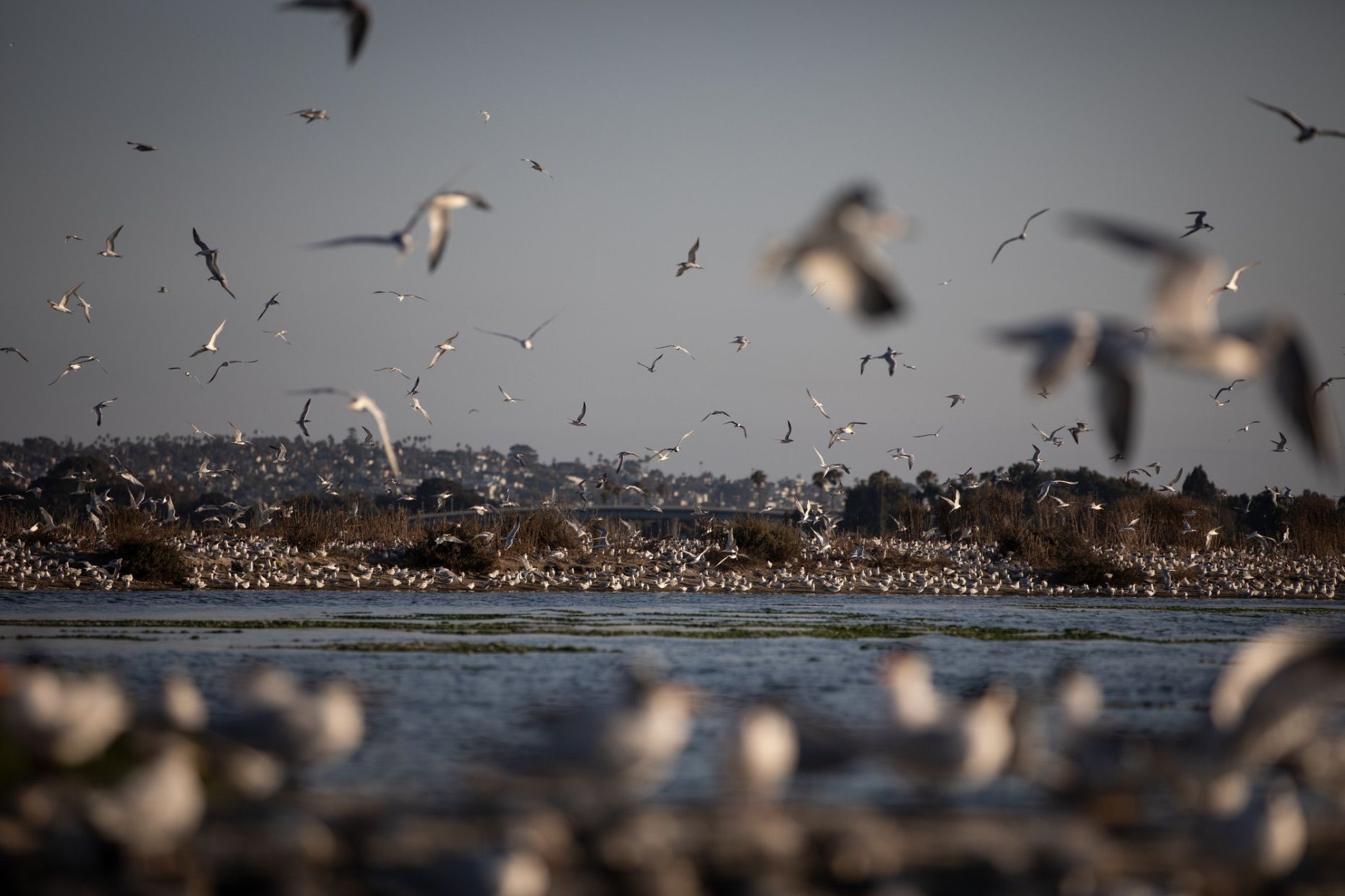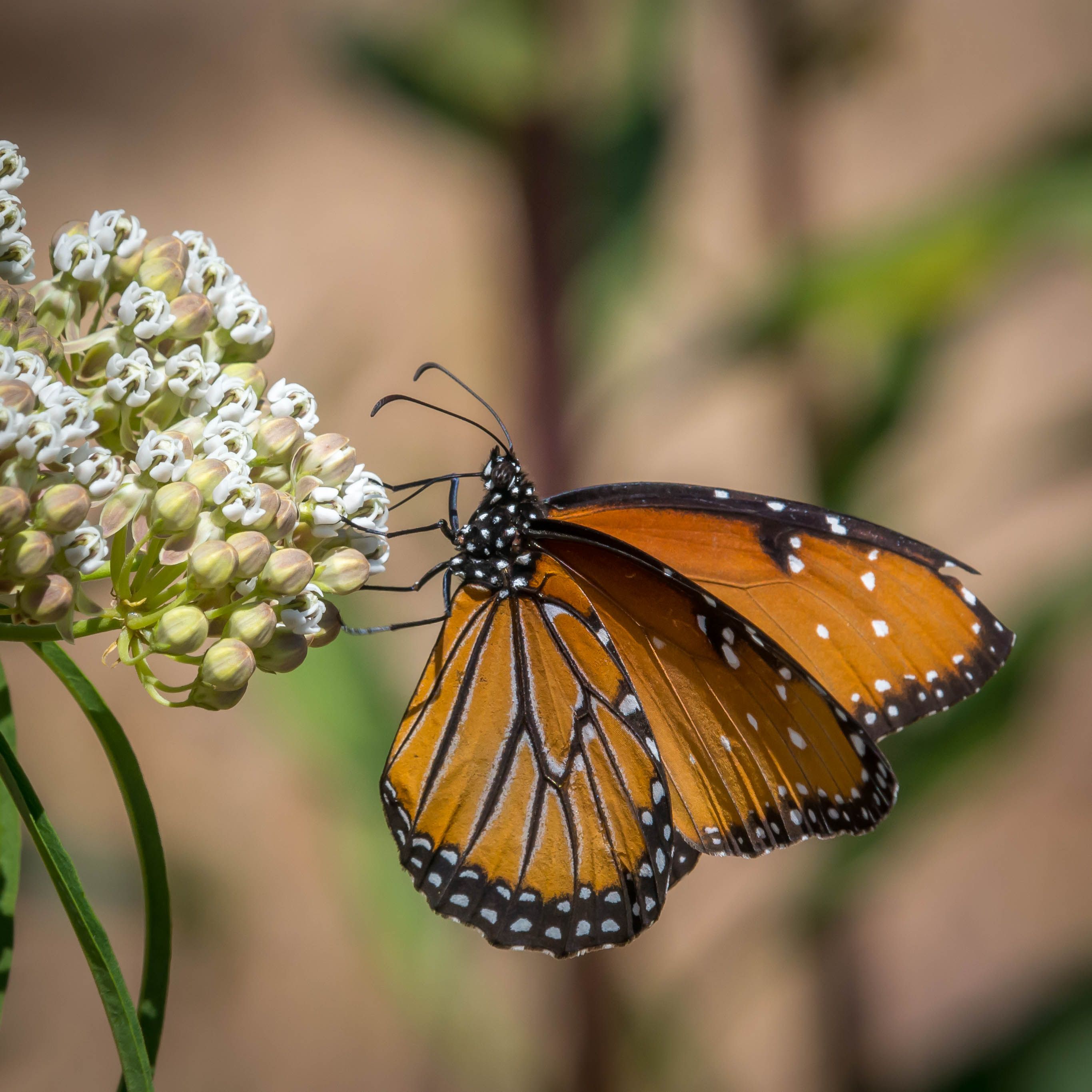
In the summer of 2024, to the delight of birders and naturalists, West Ski Island was a productive nesting ground for over 15,000 Elegant Terns. The man-made crescent shaped island in Mission Bay provided critical habitat for a near-threatened species of seabird that exclusively nests in Southern California and Baja. This year, the Elegant Terns didn’t return to their traditional nesting site, despite being spotted in Mission Bay during the spring scouting their former territory. Instead, they spent the summer nesting and raising their young at the South Bay Saltworks, one of only a handful of nesting sites in Southern California.
As both a vacation destination and recreational jewel for locals and tourists alike, Mission Bay is already a tough place for the endangered California Least Terns to thrive, who have protected nesting sites across the bay. There are a number of factors that could have influenced the Elegant Terns’ decision not to return, such as recreational activity, fish availability, or the annual San Diego Bayfair thunderboats race that circles their nesting site. However, while last year’s nesting season was initially successful, clear evidence emerged of the consequences of intense human disturbance.
Following a busy and booming Fourth of July weekend, which coincides with the height of nesting season, dozens of dead chicks, eggs, and adult Elegant Terns washed ashore at Kendall-Frost Marsh (see images below). Following this tragedy, a large number of San Diego Bird Alliance supporters, community members, and environmental advocates rallied to finally put an end to fireworks in Mission Bay. San Diego Bird Alliance also created interim guidance for protecting the nesting site and Council President Joe LaCava called for an end to the nightly fireworks. This Fourth of July (2025), San Diego Bird Alliance staff & volunteers tracked bird disturbance and illegal fireworks between July 3rd and 6th and recorded almost 200 disturbances. In addition to threatening natural resources and protected wildlife, fireworks also degrade air quality, harm water quality, frighten pets, and trigger individuals with sensory processing conditions such as Autism Spectrum Disorder (ASD) and Post-Traumatic Stress Disorder (PTSD).
Despite this public outcry, the frequency of SeaWorld’s fireworks shows hasn’t budged. Under its current Master Plan, SeaWorld is able to launch up to 150 fireworks shows per year, which includes nightly displays throughout the peak summer season. This results in thousands of pounds of chemical and physical debris deposited into the Bay. SeaWorld has also historically failed to clean up this debris as required by the regional Fireworks Permit. Luckily, concerted efforts to eliminate, or drastically reduce, the permitted number of shows are still underway. One example is the ongoing Clean Water Act citizen enforcement lawsuit filed in March 2025 by San Diego Coastkeeper and Coastal Environmental Rights Foundation (CERF), aiming to bring SeaWorld into compliance with its Fireworks and Waste Discharge Permits. Additionally, a needed update to Sea World’s Master Plan is slated to come before the City of San Diego’s Planning Commission and City Council this fall. This will be a chance for community members to offer public comment, either in-person or virtually, asking the City to end excessive near-nightly fireworks shows in Mission Bay once and for all.
The absence of Elegant Terns from West Ski Island this year demonstrates the direct impact of human disturbances on nesting seabirds. Protecting these critical habitats from disruptive activities like fireworks is essential if we hope to see 15,000 terns return to Mission Bay in future breeding seasons.
To make your voice heard and demand an end to fireworks:
- Email the Mayor - don’t forget to fill in the blanks before sending your email!
- Email all San Diego Councilmembers
- Sign up for updates on Fireworks Advocacy Opportunities
- Support your local nonprofits, San Diego Bird Alliance, San Diego Coastkeeper and Coastal Environmental Rights Foundation and others that are putting air quality, water quality, and nesting preserves first.

